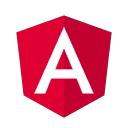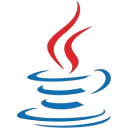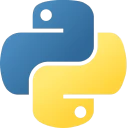SaaS Development Company
Our experienced SaaS software development team is dedicated to developing advanced software solutions that increase efficiency and automation in organizations. Using cloud technologies and modern programming languages, we collaborate with representatives of various industries to create innovative services that meet high-quality standards.
SaaS development services
Our SaaS development services cover transformative solutions that span a diverse spectrum of industries. Drawing on our proficiency in SaaS development, cloud integration, and data-driven applications, we empower clients to seamlessly embrace and harness the capabilities of SaaS technology. With expertise in creating efficient software solutions and integrating SaaS models tailored to modern demands, our developers ensure that businesses stay at the forefront of innovation, enhancing their operations through the power of SaaS.

SaaS Consulting
Our consulting services include expert guidance on all aspects of the SaaS development process. With a focus on software development experience, we help businesses conceptualize, plan, and execute their SaaS application development initiatives. From idea to implementation, we offer comprehensive assistance in the development of Saas applications. Our experienced consultants work closely with clients to help track project progress at every stage of development.

SaaS Product Development
Being a leading SaaS company, we use our rich experience in the development of innovative solutions for the creation and release of any SaaS product. Our team covers the entire Saas application development process, from idea to deployment, ensuring that client requests are delivered seamlessly. We also turn ideas into reality by creating advanced SaaS applications that meet a variety of industries and needs.

SaaS UX/UI Design
As part of our SaaS UX/UI design services, we improve the user experience and interface of SaaS client software. Our design expertise bridges the gap between technical aspects and user-centric functionality in SaaS development. Our experienced designers work closely with SaaS developers to create visually appealing and user-friendly interfaces that optimize the SaaS business model and overall product performance.

Integration with 3rd-party Services
A team of experienced developers specializes in ensuring smooth and efficient interaction between platforms and external services. Through our integration services, we enable businesses to leverage the power of a variety of third-party solutions, improving customer experience and expanding the range of services offered. SaaS developers master the complexities of integration by providing custom solutions that allow client systems to work harmoniously with external services.

SaaS Cloud Application Development and Migrating
Our services cover the development and migration of SaaS cloud applications, where we create and directly migrate our clients' software solutions to cloud platforms. The development team designs and builds innovative cloud applications tailored to the needs of each business. In addition, we specialize in efficiently migrating existing applications to other cloud providers, delivering scalability, security, and improved availability. This allows the business to become more agile and increase productivity.

SaaS Testing
During testing, we carefully evaluate the functionality and performance of the SaaS app to ensure it runs smoothly. Our testing experience covers various aspects of application development, ensuring that software meets high quality standards. With a diverse technology stack and experienced project managers, we conduct rigorous testing that is consistent with the principles of cloud technology and the unique requirements of the SaaS market. Through extensive testing, including user interface and overall functionality, we ensure that the software as a service model will perform flawlessly in a cloud service environment.

Maintenance and Support
Our team provides maintenance and support services for every stage of SaaS development, ensuring your SaaS applications stay optimized and up-to-date. With our experience in software development, we ensure continuous monitoring and updating, thus protecting the functionality of the application. We will continue to provide post-development support and address any issues that may arise during and after development. We understand the importance of a seamless user experience, and our maintenance efforts are focused on keeping your SaaS applications running smoothly and efficiently.
Why choose our SaaS development company
Our SaaS development company specializes in creating cutting-edge solutions that harness the power of technology to drive business growth and innovation. We design and develop custom SaaS applications, subscription-based models, and cloud services that perfectly fit our client’s specific goals. By carefully combining SaaS development expertise with a strong focus on security and compliance, we create transformative SaaS products that redefine how businesses operate. Cyber Bee is a trusted SaaS partner for well-known brands around the world, including the US, UK, Canada, Austria, Germany, and the UAE, enabling them to unlock the full potential of SaaS technology.

Highly Experienced Experts
Rely on our extensive team of SaaS development experts with vast experience in successfully delivering a wide range of SaaS projects for diverse industries and businesses.

Client-Focused Approach
We go beyond just SaaS development because we carefully analyze risks and offer comprehensive solutions. Our unique advantage is to add value to your project by presenting innovative ideas.

Compliance-Ready Products
Our SaaS products could be designed to meet rigorous regulatory standards, including ST-20, AML, KYC, GDPR, PCI DSS, and PSD2. We prioritize compliance readiness to ensure your application adheres to all necessary requirements.

24/7 Support and Monitoring
Our 24/7 support team is always ready to help you improve your software after deployment. A team of experts ensures the smooth operation of each stage. Take advantage of our SaaS development services to prevent any disruptions and easily scale your business.
Schedule a meeting with our CTO
Still have questions? We're here to provide the information you need about our products, services, or operations. Schedule a meeting or send us a message for assistance. Your satisfaction is our top priority, and we're committed to addressing your inquiries.

Industries We Serve
From Web3 to startups, our expertise spans across diverse industries, offering tailored SaaS solutions that drive efficiency and growth. Whether it’s fintech’s transactional transparency or healthcare’s data integrity, we’re committed to enhancing each sector with our innovative approaches.

Industry
Web3 (DeFi, Blockchain)
In the realm of SaaS app development, our team seamlessly integrates Web3 innovations, including DeFi and blockchain technologies, into applications. Through the implementation of smart contracts that automate transactions and enhance process optimization, we not only elevate security measures but also empower businesses with a more efficient and reliable digital ecosystem.
Read more

Industry
Fintech
We follow the development of financial technologies and offer our clients only the best fintech solutions. We excel in building cloud platforms for online banking, streamlining payment processing networks, and developing innovative tools for personalized investment management. Each of our developments supports the principle of transparency, confidentiality, and reliability of financial transactions, providing a reliable and optimized experience for both consumers and financial professionals.
Read more

Industry
Healthcare
Our SaaS solution tailored for the healthcare sector prioritizes enhanced data security and seamless interoperability. We specialize in creating cloud-based electronic health records (EHR) systems, tracking medical supply networks, and developing patient consent management platforms. These solutions are designed to promote greater clarity, privacy, and data integrity throughout the healthcare ecosystem, delivering reliable and efficient services to patients and practitioners alike.
Read more

Industry
Logistics
In logistic sector we provide secure cloud-based contract management for real-time shipment tracking, streamlined digital document verification, and automated payment settlement. The result is increased operational efficiency, minimized expenses, and transparency throughout the logistics department. In addition, the clever integration of SaaS ensures seamless scalability to accommodate industry growth and changing demands.
Read more

Industry
Insurance
We leverage the capabilities of SaaS development to optimize the processing of substantial data volumes, facilitating rapid and effective claims management. Our SaaS bussiness model excels in risk assessment, detecting anomalies, and offering tailored insights for insurance policy recommendations, personalized to the unique requirements of each user. Through our SaaS solutions, insurance enterprises can elevate operational efficiency and provide enhanced customer services, all while leveraging the advantages of cloud-based technology.
Read more

Industry
Legal
Within a SaaS development scope, we offer innovative solutions catering to contract management, intellectual property rights protection, and decentralized dispute resolution. Our SaaS apps provide lawyers with intuitive platforms that make it easy to create, review and track contracts. In addition, our intellectual property management solutions enable legal teams to effectively manage patents, trademarks and copyrights while enhancing the protection of valuable assets.
Read more

Industry
Real Estate
Our expertise spans the creation of cloud-based property management software, enabling streamlined operations, tenant communication, and rent tracking. We also excel in developing SaaS platforms that facilitate property listings, enabling real-time updates and enhancing user engagement. Leveraging our SaaS capabilities, we empower Real Estate businesses with tools that digitize processes, enhance customer experiences, and drive growth in a rapidly evolving market.
Read more

Industry
Start up
We provide tailored solutions that propel startup ventures towards success. Our expertise lies in crafting scalable SaaS application that perfectly aligns with the unique needs of startups. By leveraging cloud-based technologies and agile development methodologies, we equip startups with powerful tools for streamlined operations and efficient resource management. Our SaaS development services empower startups to swiftly adapt, innovate, and thrive in today's competitive landscape, ensuring their growth journey is marked by technological excellence and sustainable progress.
Read more
Our Core Technologies
Harnessing the power of cutting-edge technologies, we lay the foundation for transformative digital solutions across various domains.
Front-End



Back-End




Mobile App Development






Desktop





Cloud Infrastructure



Cyber Bee successfully integrated the payment gateway, handling an average of 3,000 transactions daily with a 99.8% success rate. The team adhered to timelines and communicated proactively via virtual meetings and emails. Their expertise in IT and software development was evident.
Anonymous
Executive, A-Dev d.o.o.
Thanks to the new features implemented by Cyber Bee, the client has seen a significant increase in user engagement. The team manages tasks well — they always deliver on time and provide regular updates to keep everyone on the same page. They’re also responsive, flexible, and knowledgeable.
Rusya Safina
CMO, Solus Agency
Cyber Bee’s developers quickly integrated into the client’s workflow and met project demands efficiently. The team was highly collaborative, and internal stakeholders were impressed with the service provider’s flexibility, resource quality, and development agility.
Nikita Kompanets
CEO, Wise Vision Group Ltd
Our Execution Process
Throughout the years in the market, we have built a well-structured project workflow for the software lifecycle implementation that allows us to handle projects smoothly and fast without sacrificing quality or costs.

Plan
First off, we clarify business and technical requirements for the project and, based on this, create a project roadmap. This allows us to define deadlines, divide the project into small sequential subtasks, and assign specialists responsible for their implementation.

Design
This stage includes building the project's business logic and drawing up the architecture according to the client's short and long-term business goals. We also create the design of the future solution to coordinate development details with the client in time.

Build
At this point, we are all set to start coding. We usually prefer a modular approach, conducting end-to-end testing with several techniques for each of the completed parts and ensuring no hard-to-fix bugs in the program code.

Alpha and Beta Testing
After the program code is written and tested on a basic level, our specialists build the project and perform alpha and beta testing. When the last discovered bugs are fixed, we prepare the project for release.

Launch
Finally, we deploy the project to a real environment and make sure everything works as intended. We also develop updates and provide technical support services at the client's request.
Frequently asked questions
What is a SaaS application?
A Software as a Service (SaaS) application is a cloud-based software solution that offers users access to various functionalities over the internet. Unlike traditional software installations, SaaS application is hosted and maintained by providers, eliminating the need for users to handle installations, updates, or maintenance. Users can access these applications from any device with an internet connection, enabling remote collaboration and flexibility. SaaS applications cover a wide range of functionalities, from project management and customer relationship management to productivity tools and communication platforms.
How is the development of SaaS related to cloud computing?
SaaS leverages this model, enabling software to be delivered over the internet rather than being installed on individual devices. Cloud infrastructure provides the foundation for SaaS applications to be hosted, managed, and accessed remotely, allowing users to access software from various devices with an internet connection. This approach eliminates the need for local installations, upgrades, and maintenance, providing scalability, flexibility, and cost-effectiveness. SaaS development harnesses cloud computing's power to create, deploy, and manage software solutions, revolutionizing how applications are delivered and used.
What is SaaS architecture?
SaaS architecture refers to the structured design framework that underpins the delivery of software in the SaaS business model. It encompasses the technical arrangement and organization of components within a SaaS platform or product. This architecture ensures seamless interaction between different elements, such as user interfaces, databases, and server infrastructure. It optimizes resource allocation, scalability, security, and maintenance, enabling efficient delivery of services within the SaaS business model. By designing a well-structured SaaS architecture, providers enhance the user experience and scalability.
What is SaaS application development?
It is the process of designing, building and deploying software applications that conform to the SaaS model. It includes the conceptualization, coding, and implementation of features that serve users accessing the application over the web. SaaS application development differs from traditional software development as it focuses on building multi-tenant, vendor-hosted cloud solutions. This approach offers users flexible access to software from anywhere, while vendors handle maintenance, updates, and security. When developing SaaS applications, special attention is paid to creating user-friendly, scalable and easily deployable solutions.
Why to use SaaS?
Using Software as a Service offers numerous advantages. SaaS products and apps streamline accessibility, eliminating the need for intricate installations. The project manager benefits from simplified collaboration, as teams can work on the same project concurrently, regardless of location. SaaS app provides automatic updates and maintenance, relieving users from the burden of regular software management. By opting for SaaS, businesses optimize resource allocation, enhance productivity, and ensure that their projects progress efficiently within a modern and user-friendly environment.
What range of services does our company offer in the realm of Software as a Service (SaaS) development?
We specialize in comprehensive Software as a Service development services for various industries. Our developers creat cutting-edge SaaS apps tailored to client's needs and seamlessly integrating third-party services to enhance functionality. Our expertise covers SaaS UX/UI design, providing user-centric interfaces that optimize the user experience; we offer SaaS cloud application development and migration services, leveraging cloud technologies to deliver scalable and secure solutions. Our SaaS testing procedures ensure robust functionality and performance, and our SaaS consulting services guide startups and enterprises through every stage of their SaaS journey. Our SaaS platform development team also offers maintenance and support services to ensure the continued success of your SaaS applications.
How secure are Saas applications?
The security of SaaS applications depends on factors such as implementation, hosting, and user actions. As a rule, various encryption, authentication and authorization measures are applied to SaaS app development to protect data during transmission and storage. Vulnerabilities are fixed through regular security checks and updates. However, security risks such as data breaches, account compromises, and insider threats remain. In end use, users need to implement strong access controls, use unique passwords, and be wary of phishing.
What could SaaS services include?
SaaS services include a wide range of offerings designed to provide users with affordable and scalable software solutions over the Internet. They can provide customers with a variety of features and capabilities tailored to meet specific business needs.
First, SaaS services typically include productivity and collaboration applications such as office suites, project management tools, and communication platforms such as email and video conferencing. These tools enable seamless teamwork, document sharing, and efficient communication between remote or distributed teams.
Second, SaaS services often encompass customer relationship management (CRM) systems that help businesses manage and analyze customer interactions, sales channels, and marketing campaigns. In addition, SaaS can include industry solutions such as healthcare practice management, e-commerce platforms and learning management systems tailored to the unique requirements of these sectors.
What is SaaS structure?
The SaaS structure involves a cloud-based software delivery model in which applications are hosted and maintained by a provider and accessed by users over the Internet. This structure typically consists of three main components:
Front-end Interface: this is the user-facing user-facing part of the application, accessible through a web browser or a specialized application. It allows users to manipulate the functions and features of the software.
Middleware: middleware provides the link between the front-end and the back-end infrastructure. It manages data processing, and provides security and integration with other systems.
Back-end infrastructure: includes servers, databases, storage, and other resources that provide the core functions of the application. Providers ensure the scalability, reliability and security of the infrastructure.
